Last week I was invited to give a presentation to Dr. Rick DeBowes’ class at Washington State University. The class is a business class for Veterinary students. In our conversation, Dr. DeBowes made a comment that stuck in my mind and I wanted to discuss it in this blog. He said, ‘veterinarians will step over a dollar trying to save a dime’. This is certainly not the first time I’ve heard this or even thought it. Believe me, as a businessperson I do believe that it is important to pay attention to where your money is going. Monitoring cost, reviewing your P&L every month, keeping track of inventory on hand, controlling labor are all solid business principles. It is also true, that sometimes you have to spend money to make money.

First let’s talk about technology and the investment that it takes to utilize it. If we afford a time-saving tool like VitusVet it will cost us a day or two to set up and implement it. But it also saves considerable labor cost when we are utilizing it to text our clients rather than talk to them on the telephone. The typical phone call takes about 90 seconds to answer and respond. A text message on the other hand takes about 13 seconds. We know that by saving our CSRs time on the telephone they are actually able to spend more time connecting with our clients, building solid relationships, providing exceptional customer service, and serving clients in the manner they wish to be served. The millennial generation of pet owners, according to the latest Qualtrics survey, demands that businesses they utilize be able to communicate with them across multiple channels. These channels include emails, text messages, video and telephone. Smart business people understand that demand and will spend the necessary money it takes to reach its customer. On the other hand, practices who are short-sighted and continue to work with too few phone lines, without capabilities of text messages, touchless pay and often not even email addresses, will certainly struggle in the near future as Millennials become the largest pet owning population and Boomers retire and do not replace pets. As for saving time, it has been found that on average, consumers will open a text message within 90 seconds of receiving it, making texting the most efficient form of communication. In fact, 89% of consumers say they prefer to text businesses, rather than speak on the phone, for inquiries, services, or appointments.* If you use a tool like VitusVet for text payments – you can save even more time by texting an invoice link, your clients can pay within seconds without needing to call, hand over a credit card and can even pay from home. Fast, easy and safe.
I recently read a post in a practice manager group where a young practice manager was requesting information about veterinary software. Her practice owner had instructed her to find the cheapest thing on the market. As someone who works with multiple software providers in practices, I can tell you that there are tremendous differences in the capabilities of the software when it comes to reporting and marketing. The problem with not investing in a good practice management software system is that you cannot utilize the important data that goes into it to grow your practice. The information gathered in a powerful PIMS can inform you about who your clients are, the demographics of your patients, allow you to do breed specific marketing, to build promotional campaigns and to understand gaps in service between multiple providers. You certainly don’t have to buy the most expensive software on the market but you certainly should purchase the software that appropriately serves your needs based on capabilities and not merely price.
Now let’s talk about Labor. Pay for talent. Yes it matters that we are utilizing controls over labor cost but hiring talented people and paying them appropriate wages and then leveraging them to the max actually is one of the most profitable things you can do in a veterinary hospital. So many times, over the years veterinary practice owners have asked me to help them find another veterinarian. Upon investigation what they really needed were support staff that were leveraged appropriately. Licensed Veterinary Technicians who are skilled at their profession can drive revenue and expand the capabilities of the veterinarian. Veterinary medicine has got to change the business model from a Doctor Centric practice to a Team Centric practice. Creating technician appointment slots and charging for those times is the way of the future. We must retrain our clients to be less reliant on seeing the veterinarian every time and more accustomed to being served by all the medical members of our team. As the labor market continues to be tight, practices are going to discover that talented team members no longer have to accept low wages. They will find practices willing to pay them what they ask.
What about your building? Keeping a fresh coat of paint in updated colors, a sharp exterior and some appealing landscaping is a wise use of money. You have one chance to make a good impression on a new client. That happens in the first 10 seconds of either their phone encounter or their visit to your hospital. If they drive up dodging gigantic parking lot potholes, overgrown shrubbery and walk in the door to be greeted by mismatched, torn and tattered furniture, the first impression could be that the medicine is just as shoddy as the appearance of the building. When I used to survey clients in practice about what was important to them in a veterinary hospital the first answer was always “they care about me and my pet”, the second one was “they practice good medicine” and the third was “the building is immaculately clean”. The appearance of cleanliness is of high importance in any medical facility, human or animal. One of our problems as human beings is we lose sight of our surroundings when they are routine to us. We get tunnel vision and only see what is directly in front of us. A good way to overcome this is to photograph different areas of your building inside and out and then look up close at what you see. Dirty baseboards, chunks out of the wall, mats with the corners missing, faded pictures, old product posters, clutter at the front desk and in office spaces, and weed filled landscapes are all easy cheap fixes that give poor impressions of a practice.
Don’t overbook. This one seems inaccurate when we are talking about dollars and dimes but overbooking is killing profit. The number one complaint, as long as I have been in the veterinary profession, is client wait time. With increased competition from low cost charitable clinics, Walmart and other online providers, pet stores and even doctor Google, veterinary practices who do not offer a stellar customer service experience will find a young generation of clients who will not tolerate this performance. Burning out staff by not controlling your appointment book appropriately is costing thousands of dollars in wasted money because of staff turnover. There are two ways to control the traffic flow in a practice, money and the appointment book. If you find that there is such demand that you cannot possibly schedule then raise your fees, see less people for more money and spend more time with each client giving them education, good communication and building a relationship of trust.
These are just a few of the ways then I see veterinarian business owners stepping over dollars to save dimes.
If you need help controlling your runaway practice please reach out to me at dboone2managevets.com.
*www.textrequest.com/blog/how-many-texts-people-send-per-day
 by a veterinarian
by a veterinarian


